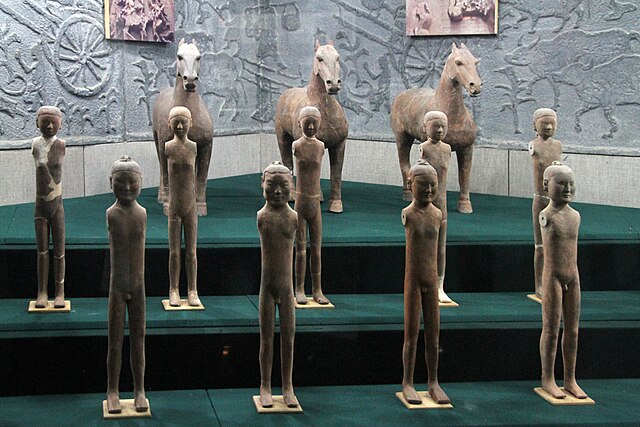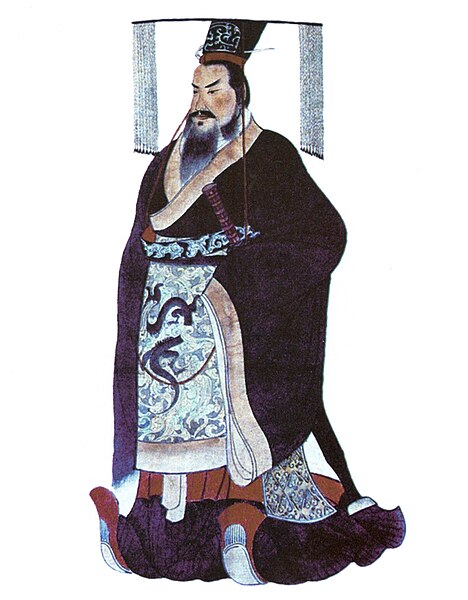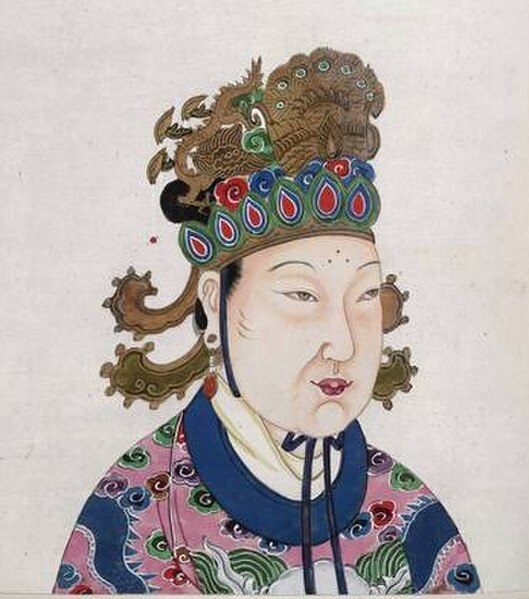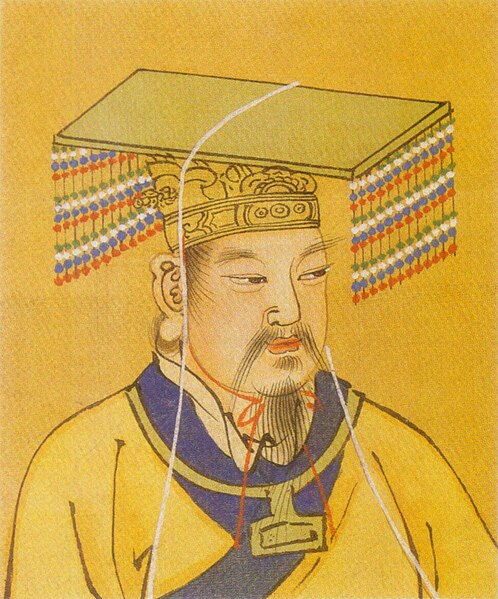Emperor Jing of Han, born Liu Qi, was the sixth emperor of the Han dynasty from 157 to 141 BC. His reign saw the limiting of the power of the feudal kings and princes which resulted in the Rebellion of the Seven States in 154 BC. Emperor Jing managed to crush the revolt and princes were thereafter denied rights to appoint ministers for their fiefs. This move helped to consolidate central power which paved the way for the long reign of his son Emperor Wu of Han.
Depiction of Emperor Jing in Sancai Tuhui
A description of Emperor Jing at the entrance of the on-site museum at Han Yang Ling
Yangling mausoleum miniature pottery infantry (foreground) and cavalry (background); in 1990, when the tomb complex of Emperor Jing of Han (r. 157–141 BC) and his wife Empress Wang Zhi (d. 126 BC) was excavated north of Yangling, over 40,000 miniature pottery figures were unearthed. All of them were one-third life size, smaller than the 8,000-some fully life size soldiers of the Terracotta Army buried alongside the First Emperor of Qin. Smaller miniature figurines, on average 60 centimeters (24 in) in height, have also been found in various royal Han tombs where they were placed to guard the deceased tomb occupants in their afterlife.
Tomb figures from the Yangling Mausoleum of Han
Throughout Chinese history, "Emperor" was the superlative title held by the monarchs who ruled various imperial dynasties. In traditional Chinese political theory, the emperor was the "Son of Heaven", an autocrat with the divine mandate right to rule all under Heaven. Emperors were worshiped posthumously under an imperial cult. The lineage of emperors descended from a paternal family line constituted a dynasty, and succession in most cases theoretically followed agnatic primogeniture.
Qin Shi Huang, the first emperor of China (r. 221–210 BC)
Qin Shi Huang escaping assassination (3rd century AD)
An 18th century depiction of Wu Zetian, the only female emperor of China
Yellow Emperor








